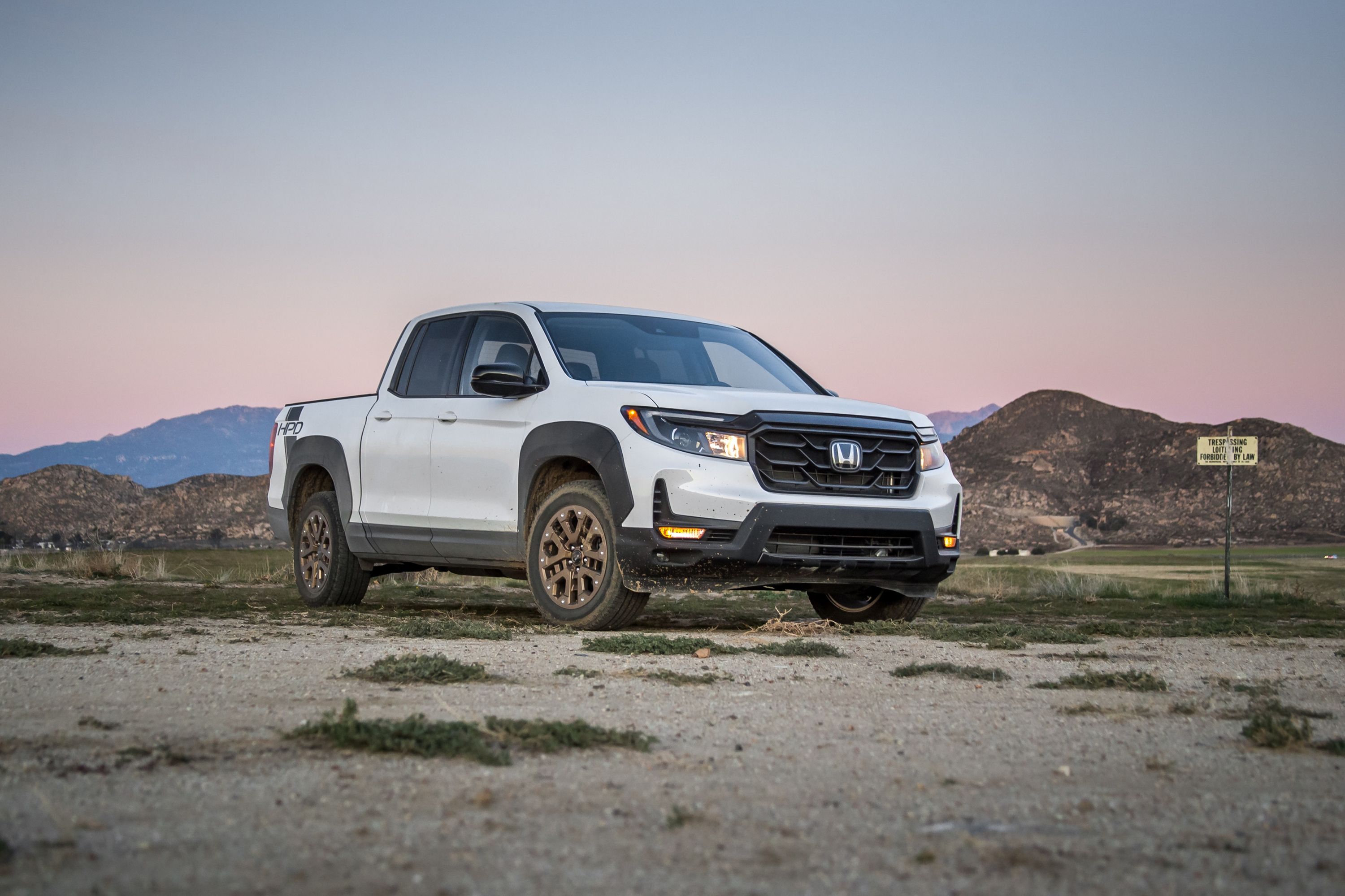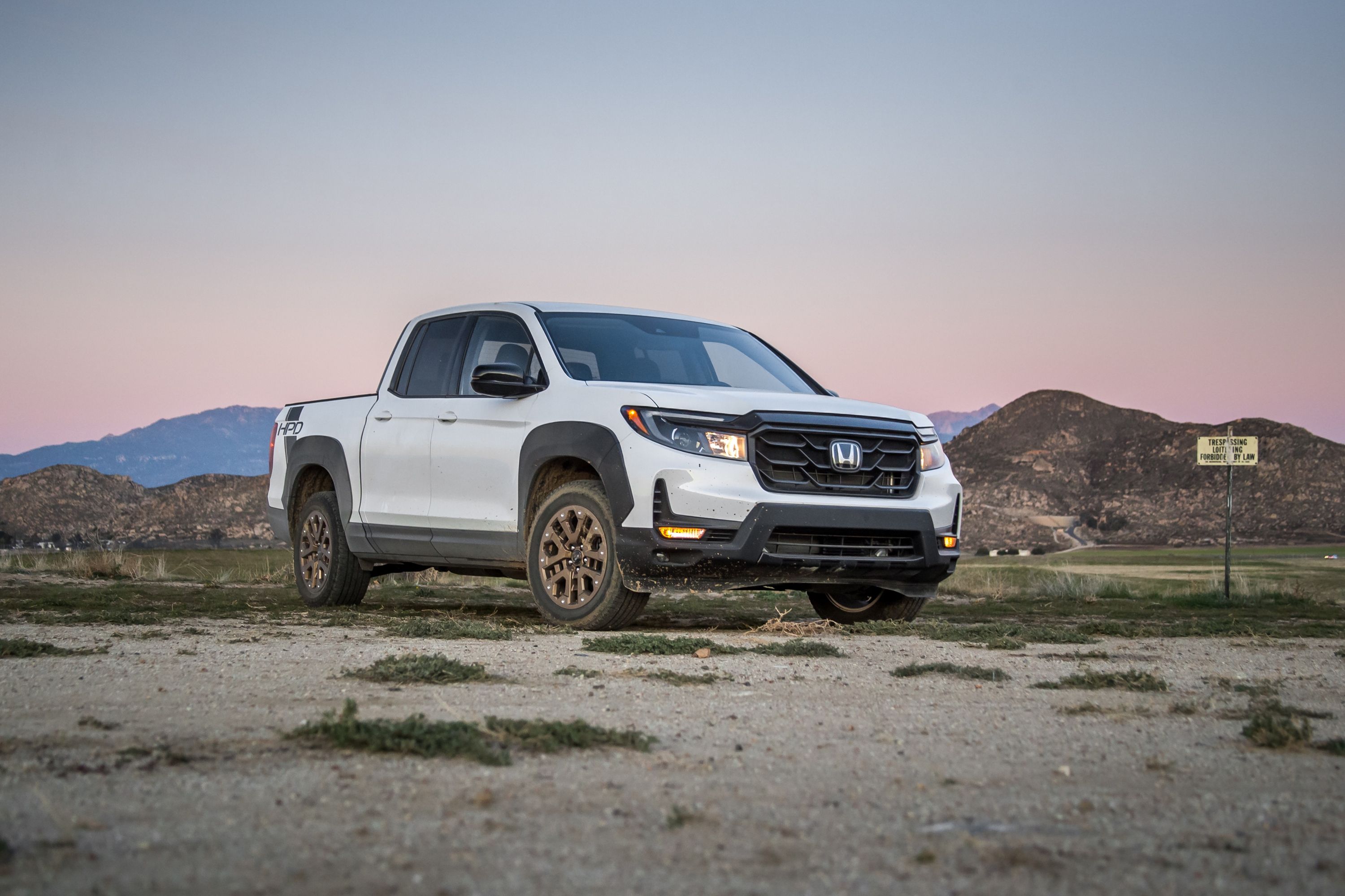
In our recent review, we pointed out that the Honda Ridgeline is the mid-size truck America still hasn't figured out it wants. There are enough people that have seen the light for sales to be reasonable (around 30K examples a year); however, they could be better. Honda has acknowledged that America needs its trucks to look rugged by giving the Ridgeline a butch facelift for 2021. But, there's still going to be a mindless chorus of "it's not a real truck because it doesn't have a body-on-frame design or solid rear axles."
It's an outdated idea, that also assumes that everyone who buys a truck uses it as a workhorse and regularly tows 7,000 lbs. That idea is patently absurd. We do accept that if you need to tow heavy loads regularly, then the Ridgeline's maximum of 5,000 lbs and the lack of truck bed size options might not suit you. However, if what you need is a lifestyle truck, then the Ridgeline is something you should be taking seriously.
Outstanding Ride Quality
The Honda Ridgeline rides on a strengthened unibody frame and has independent rear suspension. As a result, it has the ride quality of an SUV, which is desirable if your truck is an everyday driver. Its road manners are pleasant around town, and on back roads its steering is precise and direct. The chassis keeps body roll in check remarkably well.
If you have to commute on a dirt road regularly, that independent rear suspension smooths out the lumps and bumps in a way a solid rear axle setup can't. If that dirt road gets wet, or you live somewhere where snow and ice are a regular occurrence, the Ridgeline comes standard with all-wheel-drive and Honda's trick iVTM-4 AWD system featuring different modes for different surfaces.
What the Ridgeline doesn't have, at least until Honda creates an off-road package, is the kind of ground clearance trail enthusiasts will want. Still, there's more than enough for the typical lifestyle, and even enough to get more adventurous owners up to those camping and hiking spots. We spent ten days with the 2021 Ridgeline and explored local trails with ease and headed up to the top of a mountain at over 5,000 feet. We didn't move as fast as some of the dedicated or modified off-roaders, but that wasn't the point. We were a lot more comfortable. We also got to take the Ridgeline into Honda's proving grounds in the Mojave desert, where we tested it at higher speeds on dirt and sand, and learned just how sure-footed it really is.
That doesn't mean we don't have a proper Honda Performance Department (HPD) off-road package on our wishlist for 2021. Some extra ground clearance and trick shock absorbers would be a smart move.
Interior And Cargo Capacity
Honda's cabin for the mid-size Ridgeline is our pick for best in class right now. It's comfortable but rugged, and for those with a family or who regularly transport friends around, it also seats up to three people in the back. There's no trunk for the weekly grocery run, but the pickup features a lockable "In-Bed Trunk" that will keep items out of the elements. The rear seat bottoms also fold up to make that space useable for cargo when needed.
Our only complaint inside the Ridgeline is Honda's infotainment system. It's perfectly serviceable but not very intuitive. Thankfully Apple CarPlay and Android Auto come standard, making things a lot easier.
For Adventure And Home Projects
The Ridgeline has a wide stance, and as a result, a wide standard bed. It's capable of flat-carrying 4-foot wide items like drywall and plywood between the wheel wells, making it perfect for runs to the hardware store, though the sheets will hang out of the back. The truck has a dual-action tailgate, meaning you can open it downwards like a traditional tailgate or to the side like a barn door. The bed has a payload capacity of 1,583 lbs, which is plenty for most use cases, including carrying motorcycles or ATVs. It also has eight standard tie-down cleats--rated at 350 pounds each for securing loads--and is made from a dent and scratch-resistant glass-fiber-reinforced SMC composite.
For tailgaters and standard on upper trims is an in-bed sound system that uses four "exciters" to turn Ridgeline's bed into an outdoor speaker. The in-bed trunk can double as an ice bucket, and a 115V 150W/400W bed-mounted AC power outlet is available.
An All-Round Drivetrain
Honda has skipped having a four-cylinder base engine, so the Ridgeline comes with Honda's excellent and well-proven 3.5-liter VTEC V6 engine. It's a smooth unit with 280 horsepower and 262 lb-ft of torque and returns an EPA estimated 18/24/21 mpg city/highway/combined. Just as smooth is Honda's nine-speed automatic transmission, which becomes invisible around town and on the freeway, and is more than happy to keep things moderated at lower speeds on rough or slippery ground.
A Genuine Lifestyle Truck
Competitors like the Toyota Tacoma, Ford Ranger, and Chevrolet Colorado are designed as mid-size work trucks first and foremost. And, they are all excellent work trucks with capability beyond their actual size. Like the full-sizers, they've been adopted as lifestyle trucks by owners willing to compromise the ride quality and comfort they would get in a car or crossover. However, for those that don't need the full capability of a pickup truck all the time , having a truck with a unibody chassis and independent rear suspension will cover all their needs and make life more comfortable.
What we would like to see from Honda is a genuine HPD off-road package, rather than just the current aesthetic option. With the ride height the Ridgeline currently has, it limits the truck to easy-medium trails. We also know from the success of dedicated off-road truck packages the those negotiating the roads less traveled more often are happy to compromise road manners for more ground clearance and softer damping. With the current chassis and suspension setup on the Ridgeline, we're not sure that would be a huge compromise.

